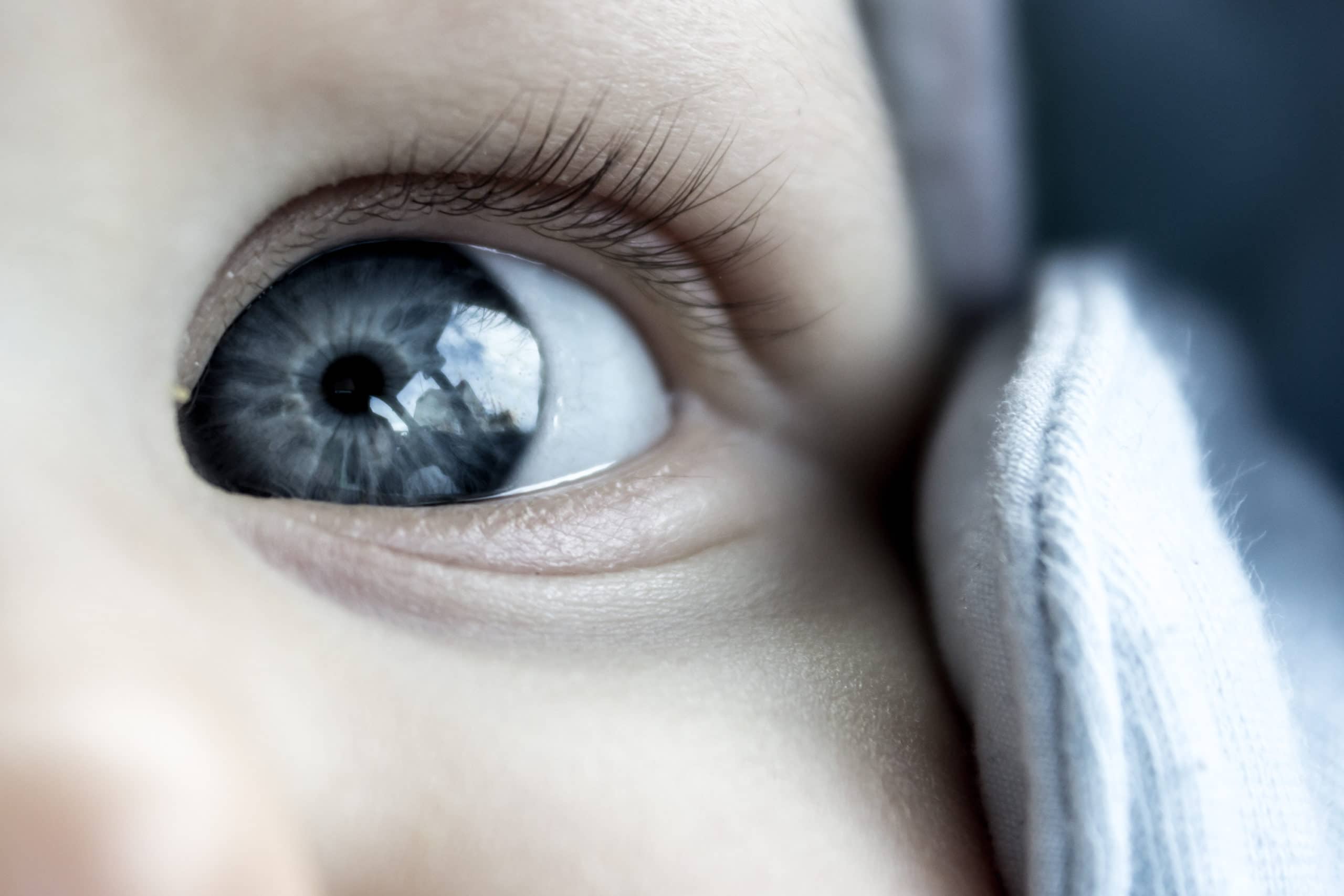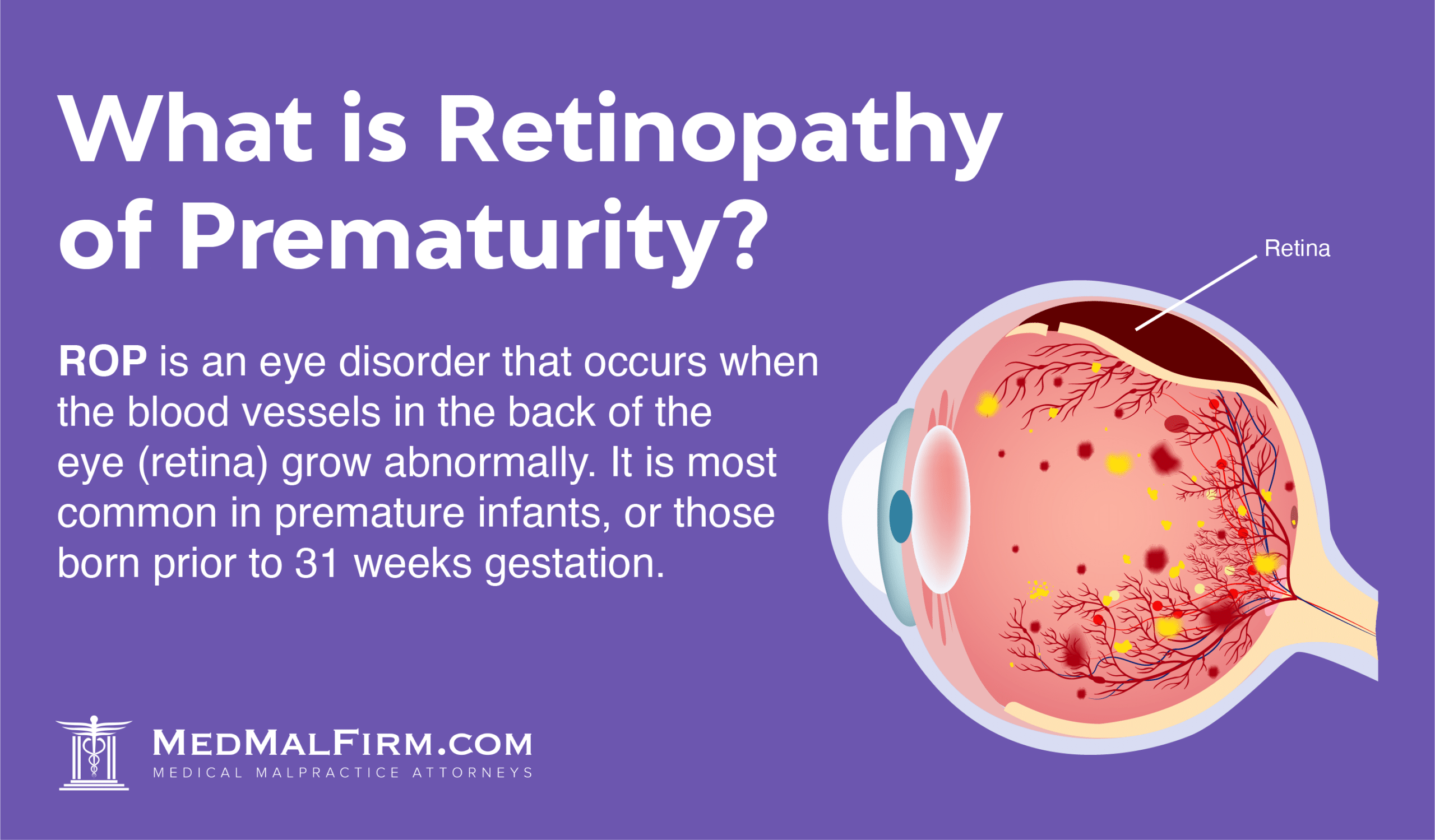
What is Retinopathy of Prematurity?
Retinopathy of prematurity, or ROP, is an eye disorder that occurs when the blood vessels in the back of the eye (retina) grow abnormally. It is most common in premature infants, or those born prior…
Retinopathy of prematurity, or ROP, is an eye disorder that occurs when the blood vessels in the back of the eye (retina) grow abnormally. It is most common in premature infants, or those born prior to 31 weeks gestation. Infants who have a low birth weight are also more at risk, especially those weighing less than 1,250 grams (2.75 pounds) at birth.

The American Association for Pediatric Ophthalmology and Strabismus (AAPOS) estimates:
- Around 3.9 million babies are born prematurely each year in the United States.
- Around 14,000 premature babies suffer from ROP, with 90% of these having only a mild form of the disease.
- Between 1,100 and 1,500 babies have a severe enough form of the disease to require treatment.
- Between 400 and 600 babies become legally blind due to ROP.
The retina is the inner part of the eye that receives light, transforms it into visual messages and then sends those messages to the brain. If the retina is damaged or becomes detached from the eye, the infant can suffer damage, vision impairment or total blindness.
How Does Retinopathy of Prematurity Affect Babies?
Many cases of ROP are mild and resolve without permanent damage. More serious cases, however, may require treatment to prevent vision impairment or loss. An unfortunate fact about ROP is that it is not something that can be easily seen just by looking at the baby’s eyes. It requires a careful assessment by an ophthalmologist to make a diagnosis.
There are generally no symptoms associated with ROP. Therefore, babies born prematurely should be screened for ROP within the first few weeks or months following birth. Screening for ROP, and starting treatment immediately (when applicable), is the best way to preserve eyesight.
What Causes Retinopathy of Prematurity?
Around 16 weeks gestation, the unborn baby’s retina begins to develop. The blood vessels start at the back of the retina and spread outward to the edges. This process completes at around eight months gestation. When a baby is born early, the process is disrupted and blood vessels can then grow abnormally.
The blood vessels can leak and cause bleeding in the eye. Over time, scar tissue builds up, which shrinks as it hardens. This shrinking can cause the retina to pull away from the eye, causing vision impairment.
What is Retinopathy of Prematurity Treatment?
If your baby has ROP that is severe enough to warrant treatment, there are a few options your doctor may choose from. These treatment options include:
- Laser Surgery: Small laser beams target each side of the retina. This stops the blood vessels from growing abnormally. The procedure takes around 30-45 minutes for each eye. The prognosis after laser surgery is generally good, though some babies do lose some or all peripheral vision (side vision).
- Cryotherapy: Doctors target certain parts of the retina with sub-freezing temperatures. The targeted cryotherapy stops blood vessels from growing abnormally on the retina, and helps reduce scar tissue. It is less common than laser therapy, but is a treatment option that is largely successful. Like laser therapy, babies who undergo cryotherapy may lose their peripheral vision.
- Injections: A newer method of treating ROP involves injecting an anti-cancer medication into the baby’s eye. Avastin (Bevacizumab) blocks new blood vessel growth. Researchers are still assessing the safety and effectiveness of this treatment, as well as how permanent the treatment is.
- Scleral Buckle: If the baby’s retina has detached, doctors may attach a stretchy band around the eyeball. This compresses the eye slightly, allowing the abnormal retinal edges to move closer to the outer wall.
- Vitrectomy: If the baby’s retina detaches, doctors can remove the vitreous (the clear gel in the eye) and replace it with saline solution. This allows them to remove the scar tissue that is causing the retina to detach and/or misplace.
Parents should be aware of the possibility that even surgical treatments can have complications, including vision loss. Babies that require surgery for ROP often have a severe form of the disease, which puts them more at risk for complications already. Around 25% of babies that have surgery do suffer vision impairment or loss.
What to Do if Your Baby Has Retinopathy of Prematurity
Babies that have ROP are at a higher risk for eye problems later in life. Parents should be diligent in having their child’s eyesight and eye health assessed every year until they reach adulthood.
If your baby has ROP that was not properly diagnosed or treated, you may also find it helpful to speak with a medical malpractice or medical negligence lawyer. Without proper diagnosis and treatment, babies can suffer preventable vision loss due to ROP. If that sounds like what your family is going through, call MedMalFirm.com for a free case review at 877-887-4850. You can also reach out using our confidential contact form.
Sources:
